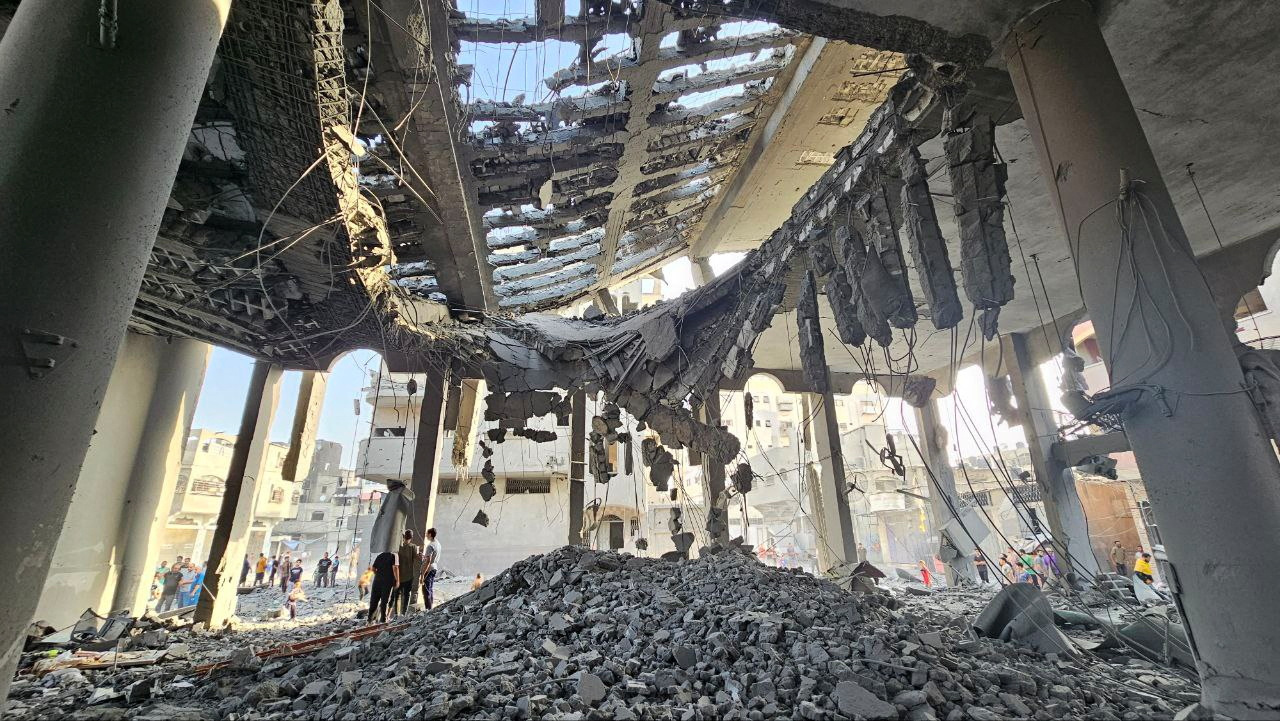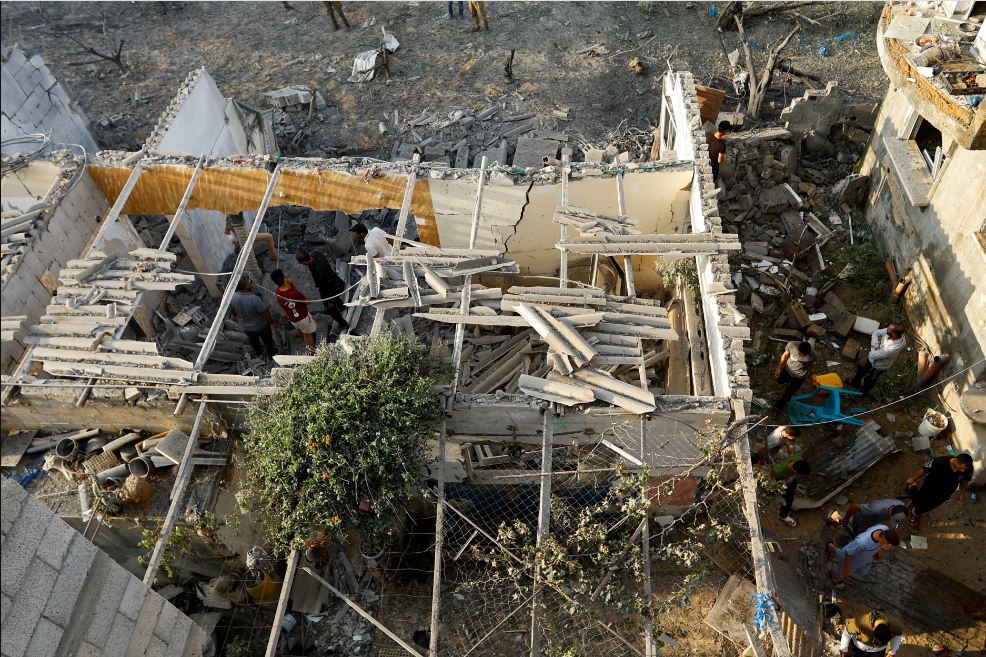Israeli soldiers skirmish with Hamas inside Gaza as air strikes claim more lives
Gaza/Jerusalem (Reuters) – Israel battered Gaza from the air on Monday, killing more people, while its soldiers fought Hamas militants on the ground in raids inside the besieged Palestinian enclave before a potential new stage to the conflict.
Gaza’s health ministry said 436 people died in Israeli aerial attacks in the past 24 hours, most of them in the south of the narrow, densely populated Gaza Strip.
With the territory’s 2.3 million people trapped and running short of basics, European leaders looked set to call for a pause in hostilities so aid could reach them
But the conflict was spreading, with Israeli aircraft also striking southern Lebanon overnight and Israeli troops and Palestinians clashing in the occupied West Bank.
Hamas also fired more rockets into Israel.
The U.N. said desperate civilians lacked food, water, medicines and places to shelter from the unrelenting pounding that has flattened swathes of the Hamas-ruled enclave.
Some aid was trickling over one border crossing into Gaza, but only a fraction of the amount needed.
At least 5,087 Palestinians have been killed in two weeks of strikes, including 2,055 children, the health ministry said.
The Israeli bombardment was triggered by an Oct. 7 cross-border assault on Israeli communities by Hamas militants who killed 1,400 people and took more than 200 hostage – the bloodiest episode in a single day since the state of Israel was founded 75 years ago.
Fighting Inside Gaza
Both Israel and Hamas reported overnight clashes in Gaza.
Israel said ground forces mounted limited raids to fight Palestinian gunmen and that air strikes focused on sites where Hamas was assembling to ambush any wider Israeli invasion.
“These raids are raids that kill squads of terrorists who are preparing for our next stage in the war. These are raids that go deep,” chief military spokesperson Rear Admiral Daniel Hagari said in a briefing.
The raids also tried to gather information on the 222 hostages being held by Hamas, he said.
Gaza’s Hamas-run interior ministry said that at least 18 Palestinians were killed and dozens injured in an Israeli air strike that hit homes in the Al-Saudi and Janina neighbourhoods of Rafah, close to Gaza’s southern border with Egypt.
Hamas’s armed wing, the Izz el-Deen al-Qassam Brigades, said its fighters engaged with an Israeli force that infiltrated Gaza and they destroyed some Israeli military equipment.
The group said the infiltration by what it described as an armoured force took place east of Khan Younis in southern Gaza.
Its fighters destroyed two bulldozers and a tank and forced the raiders to withdraw, it said. Israeli made no comment on the incident.
The Al-Qassam Brigades also said they were firing missiles at the southern Israeli towns of Ashkelon and Mavki’im. Warning sirens blared out on the Israeli side.
The Israeli military also said it had struck more than 320 targets in Gaza over 24 hours, including a tunnel housing Hamas fighters, dozens of command and lookout posts, and mortar and anti-tank missile launcher positions.
Israeli troops and tanks are now massed on the Israeli-Gaza border but how soon they might launch a ground invasion aimed at eliminating Hamas was not clear.
The Middle East’s most powerful military faces a group that has built up a large arsenal with Iran’s help, fighting in a crowded urban setting and using a vast tunnel network.
The U.N. humanitarian office (OCHA) said about 1.4 million of Gaza’s population – more than half – were now internally displaced, with many seeking refuge in overcrowded U.N. emergency shelters.
Israel has ordered Gaza residents to evacuate the north. But the OCHA said it believed hundreds and possibly thousands of people who had fled were now returning to the north due to increased bombardments in the south and lack of shelter.
“They told us to evacuate your place and go to Khan Younis because it is safe… They betrayed us and bombed us,” said 18-year-old Dima Al-Lamdani who lost her parents, seven siblings and four members of her uncle’s family in an air strike after the family moved south.
Spreading Violence
Along Israel’s northern border with Lebanon, the Iran-backed Hezbollah group clashed with Israeli forces in support of Hamas.
Early on Monday, Israeli warplanes struck two Hezbollah cells in Lebanon that were planning to launch missiles and rockets toward Israel, the Israeli military said. Israel also hit a Hezbollah compound and an observation post.
In the Israeli-occupied West Bank, two Palestinians were killed at the Jalazone refugee camp near Ramallah, the Palestinian Authority health ministry said.
Residents told Reuters that Israeli forces raided the camp and made many arrests as they clashed with gunmen and some youths who threw stones. The Israeli army has not issued a statement about the incident.
A second convoy of 14 aid trucks entered the Rafah crossing from Egypt into Gaza on Sunday night.
The U.N. humanitarian office said the volume of aid arriving so far was just 4% of the daily average before the hostilities and a fraction of what was needed. The aid shipments did not include fuel.
In Brussels, European Union leaders meeting later this week will call for a “humanitarian pause” in the war, according to draft conclusions seen by Reuters.
They said they backed a similar call from U.N. Secretary-General Antonio Guterres, who visited the Rafah crossing last week. Arab nations have also called for a truce.
EU officials said the text could still change before the summit. Some countries have expressed reservations about calling for a ceasefire as it could be seen as limiting Israel’s right to self-defence.


